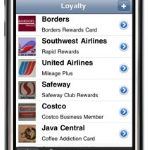Still Evolving
Monday, August 9th, 2010Last week a lot of very smart people gathered in New York for CRM Evolution 2010, and it was fantastic. Let’s start with kudos to conference chair Paul Greenberg and CRM magazine’s David Myron for putting together a great three days. As reported by Paul, the show’s attendance was nearly double the previous year’s for the second time in a row.
It’s not just numerical growth that encourages me, though of course greater attention to the disciplines and technologies of CRM is always a Good Thing. Who attends these things is at least as important as how many. The link to Paul’s ZDNet blog I gave you in the last paragraph should give you an idea of the brainpower in attendance, and these folks weren’t there to sniff around—they came to teach and to learn, to make alliances and discuss plans. The link, and those found when you follow it, probably do a better job of summarizing the event than I can hope to, but I have a few thoughts anyway.
There was a different buzz in the air than there has been in previous years, a feeling that our efforts are coming together into something greater than the sum of their parts. Social CRM is a movement now, not a fad or a trend.
The structure of the conference changed this year as well. CRM shows are typically arranged along three tracks: Sales, Marketing, Customer Service. Sometimes there’s a Strategy piece thrown in, or a nod to Social CRM/Enterprise 2.0, but it’s usually all about the three main silos CRM has struggled to break down. This time, the tracks were Traditional CRM, Social CRM, and Implementation. Each track had a fair amount of conceptual overlap with the other two. It acknowledged that these are not areas that can truly be separate, that there will be interplay and it will be beneficial. I’m not always comfortable with separating social CRM from the traditional brand, since they are interdependent and it perpetuates the belief that CRM is a failure, but this year’s structure worked for me.
The down side to the three tracks and the relatively small size of Evolution 2010 was—honestly—too much goodness in too small a space. There were several times when no matter which session I chose to attend, I was guaranteed to miss something excellent in the other rooms. Fortunately all the track sessions were recorded, so I can spend the rest of the month catching up.
I’ll need that month, because I missed a lot of good content; not just because of crossed schedules, but because of all the meetings I took. No matter where you went, people were busy getting the word out about new applications and services. I heard enough to make me very optimistic about the future. I also did a lot of socializing, but never at the expense of learning. My colleagues and my friends are increasingly the same people, so how can I complain?
 RSS Feed
RSS Feed